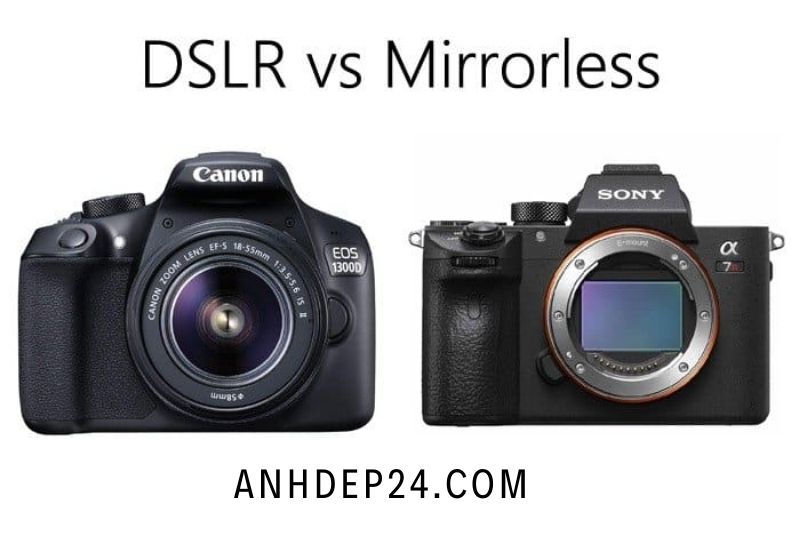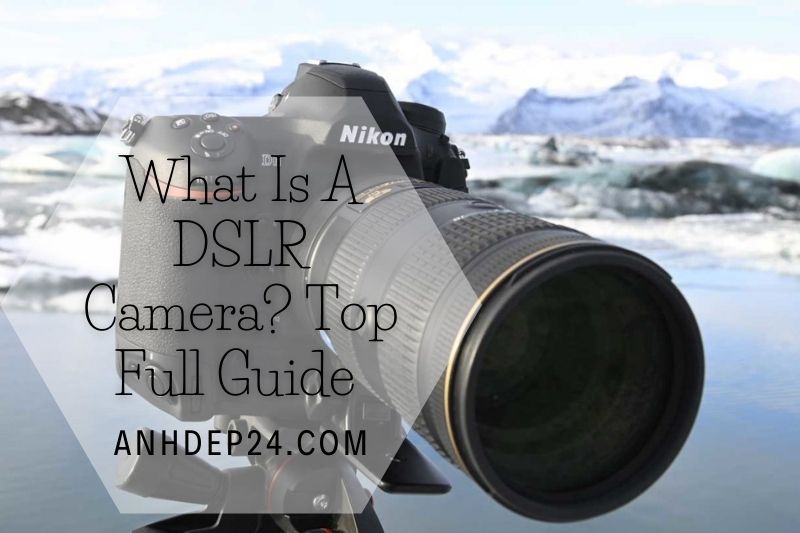What is a DSLR camera, exactly? A DSLR camera is a digital single-lens reflex camera. As the name suggests, it has a single lens, and the light passes through this lens and hits a mirror which then flips the image up to the viewfinder. This is the most popular type of camera for serious photographers because of its manual controls and its ability to take great photos.
What Is A DSLR Camera?

Digital photography has never been easier, thanks to cameras that can autofocus, hold thousands of photos on an internal memory card, and are perfect for pros as well as entry-level photographers. It is important to understand your options before you make a major purchase.
DSLR is synonymous with digital cameras. However, a digital single-lens reflex camera (known for interchangeable lenses on the same body) is only one type of digital camera.
Learn more about DSLR cameras and decide if they are the right choice.
How Does a DSLR Work?
The main components of a DSLR system are the lens and the body. They can be interchanged up to a certain extent. Many professional photographers have multiple lenses and sometimes more than one camera.
It is not rocket science to grasp their fundamental concept. The best way to explain it is by showing the path of light.
The lens is first illuminated from the front. It then travels through the lens and shapes it into the desired form. Then, it travels through the lens mount to reach the camera.
It then encounters the main mirror. It is reflected upwards, which reflects it to the viewfinder. A pentaprism, or pentamirror, directs the mirror to the eye. This allows you to see exactly what the lens sees.
A small amount of the incoming sunlight passes through the main mirror in DSLRs and DSLRs equipped with autofocus. It reaches the secondary mirror. This directs the mirror to the autofocusing sensor.
This state ensures that no light reaches the sensor. This is a crucial characteristic of DSLRs.
The mirrors will flip up when you press the shutter button. This allows light to reach the sensor. The viewfinder is blacked out because the main mirror does not reflect anything.
Right in front of the sensor is the shutter mechanism. After a time, it exposes the image. This time is known as the shutter speed.
The exposed parts return to their original state after the exposure.
DSLR Versus Mirrorless Camera: What’s the Difference?

While mirrorless cameras are now available from many manufacturers with interchangeable lenses, there are still some differences between DSLR and mirrorless cameras.
DSLR cameras are more cumbersome, making them difficult to carry around for long periods. While the extra parts and attachments that a DSLR camera can improve the quality of your images, it can also be cumbersome to bring them around, especially when you are traveling. Mirrorless cameras are more portable and lighter, making them better for traveling.
DSLR cameras are more suitable for long shoot days because their electronic viewfinder uses less battery power than a mirrorless camera.
The optical viewfinder on DSLRs allows the photographer to see directly through the camera’s lens. This also means that DSLR camera users must take photos and examine them to ensure the exposure is correct. Mirrorless cameras allow you to preview your exposure and contrast settings before taking photos.
While DSLR cameras are more expensive than mirrorless cameras, the number of accessories makes them much more affordable.
DSLRs are more common than mirrorless cameras. This means a greater selection of lenses available for DSLRs, making them more versatile than mirrorless cameras.
Both mirrorless and DSLR cameras can capture photos at high shutter speeds. However, mirrorless cameras have simpler internal mechanics that shoot faster than DSLRs, especially when taking a series of images or a burst.
Mirrorless cameras are more stable than mirror-equipped models, with less blurred photos and image stabilization.
What Are the Disadvantages of DSLR Cameras?
DSLRs have their drawbacks.
They are heavy, especially for professional DSLRs. The complex viewfinder, rotating mirrors, and autofocusing sensor occupy much space.
The optical viewfinder also presents problems. The display options available are limited. You cannot even see the current exposure. The optical viewfinder can’t tell you if the shot is properly exposed.
Separate autofocusing sensors can also cause headaches. Autofocus will not work correctly if the sensor and image sensors aren’t aligned properly. Autofocus might focus on the subject in front or behind it.
Most DSLRs have a mechanical shutter, which means they can be rated for a specific exposure number before eventually failing.
Some related posts:
- How To Allow Camera Access On Snapchat? Top Full Options 2022
- What Is ISO On A Camera? Top Full Guide 2022
- What Is A Mirrorless Camera 2022? Top Full Guide
FAQ
What is the main purpose of a DSLR camera?
The viewfinder on a DSLR camera lets you see exactly what you are shooting, so you can better visualize and capture your shots.
Is a DSLR camera better than a digital one?
Sensor Size
DSLRs are equipped with larger sensors than digital cameras for consumers. Larger sensors have more pixels, which produce less noise at higher ISO settings. This gives the DSLR an edge in photo quality over the point-and-shoot digital camera.
Does a DSLR take better pictures?
A DSLR will always produce better pictures than a point and shoot. A DSLR produces superior results in low-light situations, and with the right lenses and settings, this is obvious. All DSLRs can save images in RAW format, allowing better control and post-processing.
Conclusion
In conclusion, the benefit of DSLR cameras is clear. They provide better image quality and more shooting options than traditional point-and-shoot cameras, making them a great choice for serious photographers. Thanks for reading!
